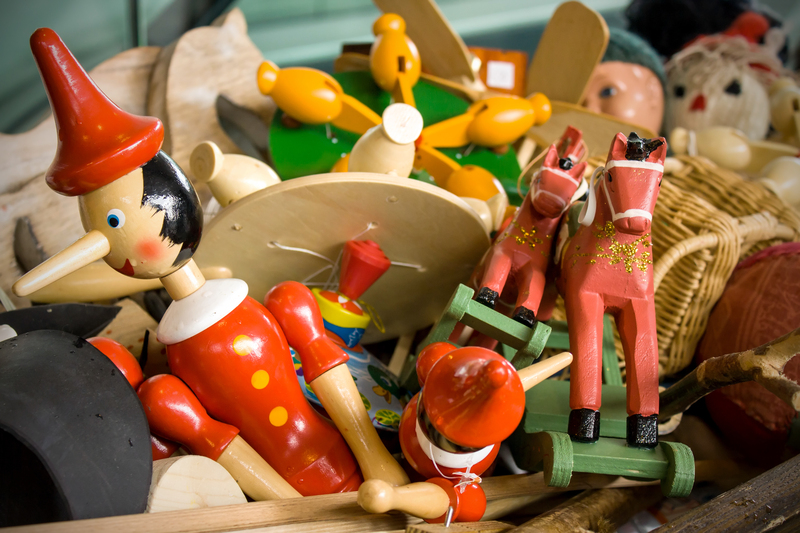
Eco-Friendly Solutions for Recycling Your Cookware
Do you have stacks of old pots and pans cluttering your kitchen cabinets? Whether they are scratched, warped, or simply out of use, worn-out cookware doesn't have to wind up in a landfill! This in-depth guide will teach you everything you need to know about eco-friendly solutions for recycling your cookware. Discover how to dispose of your cookware responsibly, explore creative ways to upcycle, and learn expert tips on environmentally conscious decluttering!
Why Recycling Cookware Matters
Cookware recycling is crucial for reducing waste and conserving valuable resources, especially as most pots and pans are made of metals that are infinitely recyclable. Here's why it matters:
- Saves energy: Recycling metals like aluminum and stainless steel uses significantly less energy than producing them from raw materials.
- Reduces landfill waste: Non-biodegradable cookware contributes to overflowing landfills and environmental pollution.
- Protects natural resources: Recycling helps preserve virgin ore and lessens the environmental impact of mining.
The Environmental Impact of Tossing Cookware Away
When cookware such as non-stick pans, cast iron skillets, and stainless steel pots end up in landfills, they remain largely intact for decades. Their coatings can leach chemicals, and their metals won't biodegrade, pushing up global waste levels. Choosing sustainable cookware disposal is crucial for our planet's health!
Common Types of Cookware and Their Recyclability
Not all kitchenware is created equal. Before recycling, it helps to understand the different materials your cookware might be made from and whether they're accepted at recycling facilities:
- Stainless Steel: Highly recyclable and often accepted by scrap metal facilities.
- Aluminum: Lightweight and fully recyclable--look for recycling centers that process aluminum cookware.
- Cast Iron: Incredibly durable and desirable at metal recyclers, though heavy and seldom tossed out.
- Copper: Preferred by scrappers because of its high value, but may require removal of handles and coatings.
- Non-Stick Cookware: Trickier to recycle due to synthetic coatings, typically needs to be processed at specialized facilities.
- Enamel-Coated, Ceramic, or Glass Cookware: Rarely recyclable in regular municipal recycling streams; check for specialized options.
How to Tell What Your Cookware is Made Of
Check the bottom or handles of your pots and pans for labels or stamps identifying the material. In doubt, perform a magnet test--magnets stick to ferrous metals like steel and cast iron but not to aluminum or copper.
How to Prepare Your Cookware for Recycling
Before you drop off your old pans at a recycling facility, follow these steps to ensure they can be properly processed:
- Clean Thoroughly: Wash dishes free from food residue, grease, or burnt spots.
- Remove Attachments: Unscrew or pry off plastic handles, rubber grips, or glass lids since most centers require only the metal body.
- Check with Local Recycler: Some facilities have special rules--call ahead or check online for their requirements on mixed materials or coated cookware.
Tip: Group together items made from the same metals for easier drop-off and processing.
Where and How to Recycle Old Cookware
Finding the right place for your eco-friendly cookware disposal can make all the difference. Consider these options:
Municipal Recycling Centers and Scrap Yards
- Many cities include scrap metal bins at official recycling sites.
- Check if your curbside program accepts mixed metals--if not, take items to a dedicated scrap metal yard or household waste recycling centre.
- Non-stick or Teflon-coated pans may require special handling--the coating must be removed before recycling the metal, or brought to specific facilities.
Specialized Retail Drop-Off Programs
- Retailers like Williams Sonoma and Sur La Table occasionally offer cookware recycling drop-offs--check their websites or ask in-store for current programs.
- Brands such as GreenPan, Calphalon, and others sometimes host take-back or trade-in events to recycle old pans responsibly.
Nonprofit Donation and Reuse Options
- If your cookware is still usable (not warped, cracked, or unsafe), donate to thrift stores, shelters, or community kitchens.
- Many organizations gladly accept gently used pans, which helps extend the lifecycle of the product and supports those in need.
Creative Ways to Upcycle Old Cookware
Recycling cookware doesn't always mean melting it down. With creativity, you can give new life to old pans in fun, useful, or even artistic ways!
DIY Kitchen Projects
- Herb Planters: Drill drainage holes in old saucepans or colanders, fill with soil, and grow kitchen herbs on a windowsill.
- Utensil Holders: Turn deep pots into countertop holders for kitchen gadgets and spatulas.
- Wall Art: Hang colorful, vintage cookware on the wall as quirky, retro decor.
Home and Garden Uses for Old Pots and Pans
- Bird Feeders or Baths: Transform old pans into durable, weatherproof bird feeders or baths in your garden.
- Outdoor Candle Holders: Use shallow pans to make DIY outdoor candles or lanterns for patios.
- Hardware Storage: Organize screws, nails, and small tools in the garage with retired pots.
Artistic Upcycling Ideas
- Repurpose metal lids into clocks or mirrors.
- Paint and decorate old pans for unique serving trays or memory keepsakes.
- Use cast iron pieces for outdoor sculptures or folk art projects.
These eco-friendly alternatives to throwing cookware away not only prevent waste but can also add a stylish, sustainable flair to your home or garden.
Eco-Friendly Tips for Replacing and Managing Cookware
If you're looking to refresh your kitchen tools, be intentional to avoid waste going forward. Here's how:
Choose Sustainable Cookware Brands
- Look for brands using recycled materials in their products or those with take-back programs.
- Buy high-quality, long-lasting pieces (like stainless steel or cast iron) rather than frequently replacing cheaper, disposable pans.
Extend the Life of Your Kitchenware
- Avoid metal utensils on nonstick surfaces and always use gentle sponges to prevent scratches.
- Season and care for cast iron cookware to prevent rust and ensure decades of use.
- Promptly fix loose handles or minor dents--some cookware can be repaired to extend lifespan.
Educate Friends and Family
- Share your experience with environmentally responsible cookware recycling and encourage others to join in.
- Set an example by choosing eco-friendly kitchen solutions, reducing waste one pan at a time.
FAQ: Eco-Friendly Solutions for Cookware Disposal
Can you recycle old pots and pans in curbside bins?
Most regular curbside bins do not accept pots and pans due to their size and mixed materials. Always check your local regulations--often, they must go to a specialized recycling facility or scrap yard.
What should I do with Teflon or non-stick pans?
Because of their PTFE or ceramic coatings, non-stick cookware is rarely accepted in standard metal recycling. Seek out manufacturers' take-back programs, specialty recycling drives, or upcycle them for non-food uses.
Are there cookware recycling initiatives in my area?
Check your city or county waste management website, search for "metal recycling" or "appliance drop-off events," and call local scrap metal yards. Many communities offer periodic collection events or permanent drop-off locations.
How can I make sure my cookware doesn't end up as waste?
Prioritize reuse, donation, upcycling, and finally recycling. Only discard as a last resort. Always ensure you've removed all non-metal attachments before recycling.
Conclusion: A Greener Kitchen Starts with Responsible Cookware Recycling
By choosing sustainable solutions for recycling your cookware, you're contributing to a cleaner environment, conserving resources, and inspiring those around you to take eco-friendly action. Whether you opt for metal recycling, creative upcycling, or donation, every pot and pan given a second life keeps waste out of landfills and supports a circular economy.
- Always identify the material of your cookware and prepare it for recycling or donation.
- Contact your local recycling facilities and explore retail trade-in programs for responsible disposal options.
- Get creative with upcycling projects to add a personal touch to your home or garden.
- Choose high-quality, eco-conscious cookware to minimize future waste.
Together, we can create a more sustainable world--one pan at a time!
If you found these eco-friendly cookware recycling tips helpful, share them with friends and subscribe for more green living advice!

